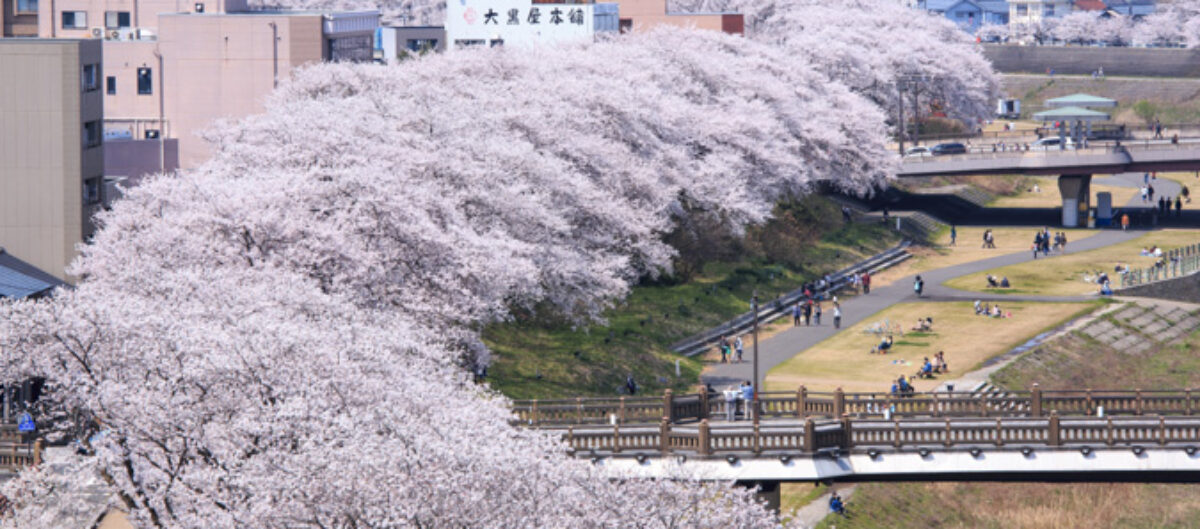

November/23/2019
I’d like to write about the legend of Echizen washi and Okamoto Shrine . (If you don’t know about Echizen Washi, please visit my previous post.(Echizen Washi has a 1,500-year history and is still evolving))
“This story is from about 1,500 years ago.
There was a village, which is now the city of Echizen, among some mountains. The village didn’t have many rice or vegetable fields, so the people there couldn’t make ends meet.
One day, when a villager was looking at the Okamoto River, he saw a breathtakingly beautiful princess looking at him. The princess said softly, “This village doesn’t have many rice or vegetable fields. Your life is difficult, isn’t it?”
The villager said, “Yes, you’re right.”
The princess pointed to the Okamoto River and said, “Look – the water here is very clean. Make paper using this water. You can make good paper for sure, and your life will be much easier.”
The villager asked, “What’s paper?”
“Paper is a thing you can write on,” she replied. “Noble people are eager to have paper. I’ll teach you how to make it.”
The princess carefully taught the people how to make paper.
“You taught us how to make paper kindly,” the villagers asked. “Who on earth are you?”
“I live upstream,” the princess said, and flew away beyond the clouds and disappeared.
People thought that the princess must be a god. They called her Kawakami Gozen and built Okamoto Shrine, where the princess is enshrined as the Godess of Paper.” (The end)
I went to Echizen Washi Village and Okamoto Shrine today. It takes 20 minutes in a taxi to get to Echizen Washi Village from JR Takefu Station, and it takes 10 minutes to walk to Okamoto Shrine from there.

First, I went to Echizen Washi Village.(The official site of the Echizen Washi Village is here.) It’s the production center of Echizen washi, where there are washi makers, restaurants, Papyrus House(パピルス館), and the Udatsu Paper & Craft Museum(卯立の工芸館).

At Papyrus House, you can try making original washi and buy washi products.


At the Udatsu Paper & Craft Museum, you can see how washi is made.




Echizen Washi Village is designated as one of Japan’s top 100 most beautiful historical sites. I enjoyed seeing the old, beautiful scenery in the village.
Next, I went to Okamoto Shrine.

When I saw the torii at Okamoto Shrine, I was impressed by both the beauty of the scarlet torii and the yellow leaves of the ginkgo trees on either side.

A torii is the gateway to a sacred shrine.

Inside the shrine, there were a lot of yellow leaves on the ground, like a carpet made by nature.




After going up the stairs, I saw the Okamoto Shrine building. Around the building, there were a lot of tourists. I noticed that the building blended in very well with the surrounding nature and it was beautiful.
Here are some facts about Okamoto Shrine:
- The god of paper is enshrined there.
- The shrine has the most complex roof of all Japanese shrines.
- There are sculptures on the walls of the building.
- There’s a branch of Okamoto Shrine in a government printing office at the Ministry of Finance. This means that the government recognizes the shrine officially.


The shrine has five roofs that look like waves in the sea. There’s green moss on the roofs, and this gives the shrine a majestic look. A picture of the shrine was used on the front cover of The Best 100 Shrines, and it was selected by NHK(Japan’s national broadcasting organization) as one of the world’s top 100 examples of great architecture. Okamoto Shrine has a high reputation.



On the walls of the shrine are a lot of sculptures of creatures such as dragons, Chinese phoenixes, and lions, as well as sculptures based on ancient Chinese stories. The tourists were looking intently at the sculptures. (Because the inside of the building is sacred, you can’t go in.)

How to pray at a shrine:
1. Put some money (between 5 and 100 yen) into the wooden box in front of the building.
2. Slowly shake the rope to ring the bell near the box.
3. Stand straight and bow twice. Clap twice in front of your chest and make a wish or pray; then bow once more.
Okamoto Shrine is not well known, but it has great historical and architectural value. I recommend going there between April and November.

———————————————————–
<Okamoto Shrine Information>
Open: 24 hours, 365 days
Admission: Free
Access: A 10-minute walk from Echizen Washi Village
( It takes 20 minutes in a taxi to get to Echizen Washi Village from JR Takefu Station .)
(References)
「越前和紙の里」(編:岡本小学校「越前和紙の里」編集委員会)(岡本小学校PTA記念事業委員会)
「神々が見える神社100選」(編者:芸術新潮編集部)(新潮社)
「福井県の歴史散歩」(編:福井県の歴史散歩編集委員会)(株式会社 山川出版社)
「神と紙の郷 祭りの心」(編集:記念誌編集委員会)(第三十九回式年大祭実行委員会)
「日本木造遺産 千年の建築を旅する」(著)藤森照信(写真)藤塚光政(世界文化社)
「神社専門メディア「奥宮-OKUMIYA-」」https://okumiya-jinja.com/
